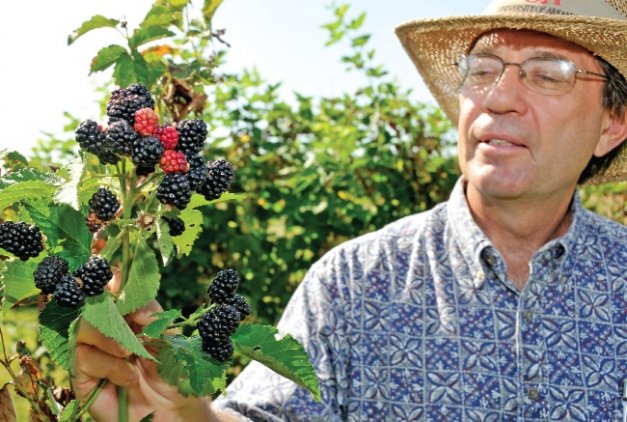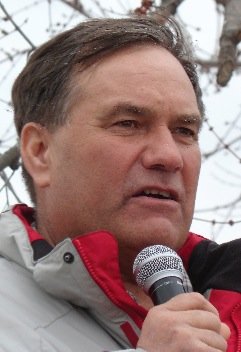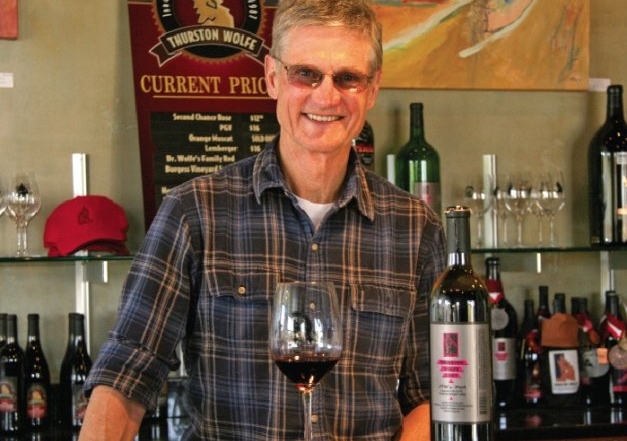Project Description
Apples
Featured stories about Apples and the new Yakima Valley AVA appear in this issue.
Click here to view a PDF version of this issue.
Summerland’s focus switches
Summerland cherry breeder Dr. Cheryl Hampson’s objective is to develop cherries that are large, firm, and sweet, have good stems, and are productive. For the
Surround might deter stinkbugs
The brown marmorated stinkbug is a challenge to control for any fruit grower, and organic growers have the fewest strategies of all. That’s why Win
B.C. growers hope for compensation
A review of the Columbia River Treaty, which the United States and Canada entered in 1964, has British Columbia growers hoping for compensation for the
Apple variety network
Variety and cultivar selection is the largest economic decision a grower can make when establishing a new high-density orchard block where a thousand trees or
New model for variety release
RiverBelle. (Courtesy of Wescott Agri Products) Two new apple varieties, Pazazz and RiverBelle, are growing in some apple orchards and coming to market through a
5 things to consider when selecting a variety
photo by John Clements, University of Massachusetts Win Cowgill, horticulturist at Rutgers University and area fruit agent located in Hunterdon County, New Jersey, is working
Bing dethroned
The Bing cherry, long the king of the Northwest industry, is losing ground to the newer Canadian varieties. In the 2000 season, Bing represented almost
WSU program focused on self-fertility
Stone fruit breeding began at Washington State University in 1949 with the arrival of Dr. Harold Fogle, who had just finished his doctorate at the
Career comes to late fruition
For more than two decades, Dr. Tom Toyama quietly got on with his work as stone fruit breeder at Washington State University. Though no variety
Stellar lineage
The Pacific Northwest cherry industry is seeing the effects of a shift to self-fertile varieties in the form of higher and more consistent production. Self-fertile
AVAs get smaller
In wine marketing, an appellation or American Viticultural Area (AVA) is a way to differentiate your wine from others and define its sense of place.
Smart cherry breeding
Breeder Nnadozie Oraguzie stands in a Phase 1 block planted in 2011 and 2012. He'll begin collecting fruiting data when the trees are three to
Promising WSU cherry selections
One selection showing promise in Washington State University’s cherry breeding program is an early variety that has better fruit quality characteristics than the current Chelan
Peaches from Arkansas
Arkansas plant breeder John Clark. Photos courtesy of John Clark, University of Arkansas New nectarine varieties and a peach variety developed by fruit breeder Dr.
Table grapes part of Arkansas breeding program
This is Joy, in a photo from Idaho, where fruit breeder Esmaeil Fallahi included John Clark’s table grapes in his trial plantings. courtesy of John
Tougas Family Farm
Mo Tougas asks a question of Oregon State University sweet cherry expert Lynn Long on an IFTA tour of his farm. The pruning demonstration was
Yakima Valley opened the AVA door
The idea to designate Yakima Valley as Washington State’s first American Viticultural Area came to Mike Wallace while he was visiting California’s wine country in the early 1980s, when northern California growers and vintners were carving out appellations and subappellations.
Spotlight on Yakima Valley
Wade Wolfe in the tasting room of his Thurston Wolfe Winery in Prosser, Washington. Melissa Hansen The thirtieth anniversary of Yakima Valley as an American
FruiTrivia: Test your knowledge of fruit varieties
1 Which of the following cherries is not an offspring of Van? a. Lapins b. Stella c. Summit d. Sweetheart e. Rainier 2 The Honeycrisp











